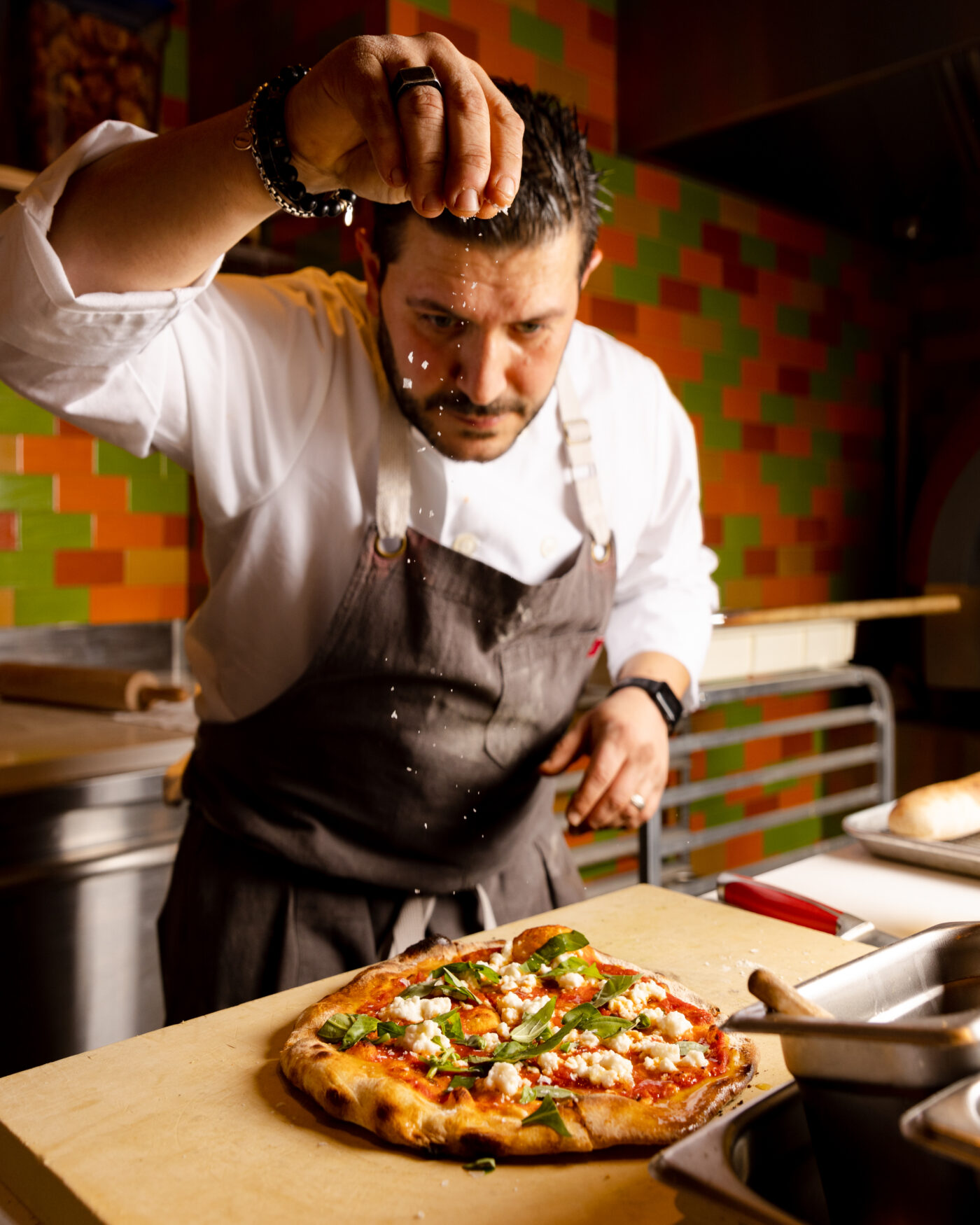RESTAURANT
Acadia is a fantastic middle eastern eatery in New York, from a star chef
We’ve already extolled the virtues of Ari Bokovza, who’s fast becoming one of America’s best new chefs, for his magnificent restaurant Dagon on New York’s Upper West Side (which was once about as exciting gastronomically as the dark side of the Moon). Earlier last year, with his partners Simon Oren, David Sasson and Gil Ohana, he launched Acadia, right in the bullseye of Manhattan, on West 57th street and 6th Avenue, diagonally across from Carnegie Hall. In other words about as good a location as you could have an eating establishment anywhere in America.

Location alone won’t make you a success, but it sure gets you a verdict quicker. Within weeks the place, at least twice the size of Dagon, was packed and reservations de rigueur hard to get. That wasn’t remarkable. What’s really telling is that that enthusiasm hasn’t abated, and the place is doing phenomenal business.
The restaurant, designed by Scott Kester, who has exquisite taste and is one of the hottest hospitality designers out there, is NY chic and sophisticated but not intimidating, which is a great and welcome accomplishment. The food is, like Dagon, what Ari calls Levantine cuisine, the food of the Eastern side of the Mediterranean. It’s probably principally Israeli but with dishes, magical recipes and ingredients from North Africa and Syria.

There are different dishes from Dagon and a lot of the same ones — his signature concoctions like the chicken (prepared over four days from when the purveyor walks into the kitchen with his freshly killed birds to when it’s served), the lamb’s neck (he needs a better name for that, but you won’t get a better tasting lamb anywhere in America — I mean, I don’t know that for a fact, but it’s my strong opinion), and the traditional Mezze, the tapas sized dishes with creamy hummus, which is prepared table-side, the way classic French restaurants used to do things — and it’s off the charts, some of the best you’ll ever eat — and eggplant, labneh, and a blended chicken liver pate that is definitely the best you’ll ever eat.
One new preparation is a bread called an ambusak, which is oven-baked and stuffed with four cheeses — mozzarella, kashkaval, feta, and parmesan — and olives. It may sound weird — or desperate — to say one would go back just for the bread, but one, er, would. And has. He also does a phenomenal King Oyster Mushroom with Japanese eggplant. You would go back for that too.
And there’s the black cod, which is sablefish, which Ari calls his favorite dish.

“Miso cod, the Nobu classic, has always been one of my favorite Japanese dishes.
You see it on almost every Japanese menu and for good reason… its fucking killer.
I always wanted to take a stab of replicating this iconic dish using flavors that are more indigenous to the Levante.”
“The classic, Japanese version is marinated in a combo of miso, mirin, and sake — I’m sure many chefs do it differently but most versions have at least 1 or 2 of those components. Each component serves a purpose. The miso adds depth, good funk, and acts as a glue for the marinade, the mirin adds sweetness, and the sake adds acid.
“So the thought was to use Levantine ingredients that will serve the same purpose:
Black garlic and Amba for the fermented, soulful ‘funk, ’Silan for the sweetness and pureed chickpeas to ‘glue’ the marinade to the fish. The fish is cooked under the salamander at raging high heat.”
What’s the difference between Israeli and Arab food, I ask?
“It really depends on the hands that are preparing it,” he answers. “Israel is essentially a melting pot of different cultures and ethnic backgrounds, from Eastern Europe to North Africa. The food of Israel is reflective of this while the neighboring Arab countries are more traditional and rooted in their respective cultures and cuisines.”
I ask Ari what the objective for his new restaurant is, inasmuch as restaurants have objectives.
“Well the obvious and boring answer would be to say the objective is always to be successful and profitable. But on a deeper more personal level I would have to say to cook the food that I grew up on and present it in a way that’s unique and true to who I am.”









